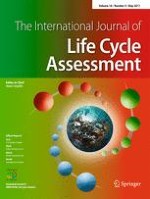01-05-2011 | CARBON FOOTPRINTING
The carbon footprint of bread
Published in: The International Journal of Life Cycle Assessment | Issue 4/2011
Log inActivate our intelligent search to find suitable subject content or patents.
Select sections of text to find matching patents with Artificial Intelligence. powered by
Select sections of text to find additional relevant content using AI-assisted search. powered by
